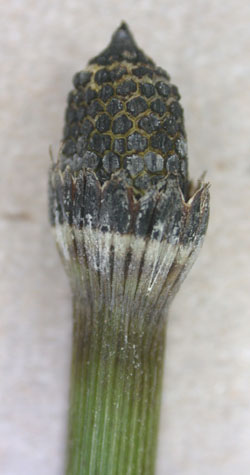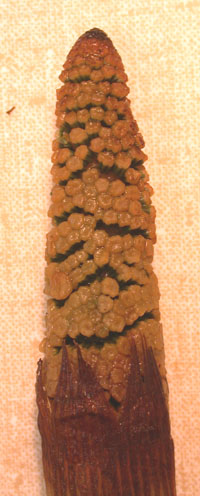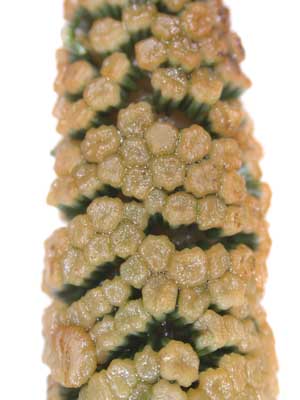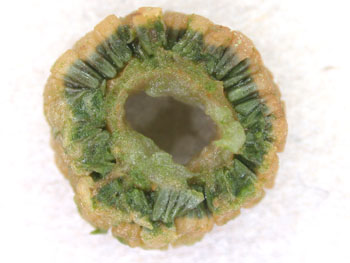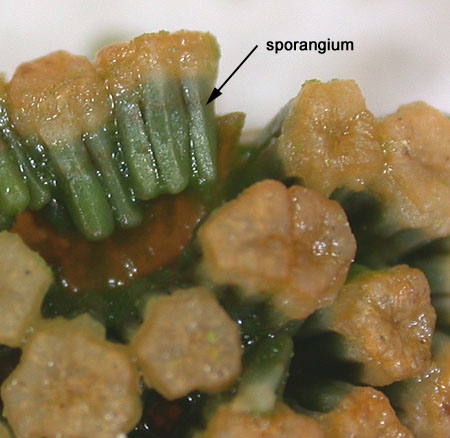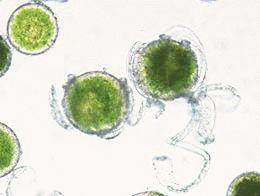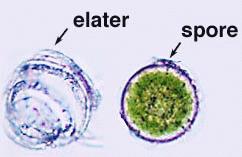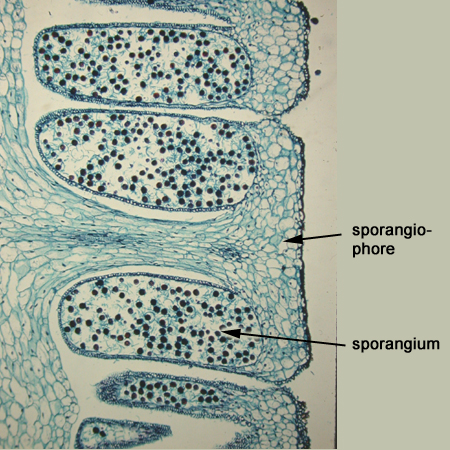Equisetum – strobilus
As with some of the Lycophyta, the reproductive structures in Equisetum are localized in strobili. This is Equisetum hymale. You will see it in lab. This species, like other Equisetum, has terminal strobili. Note that this E. hymale has no branches. the strobilus is borne on a vegetative stem (meaning that there is no specialized brach for reproduction).
This is the strobilus of Equisetum telmatiea. Early in reproductive stems can be seen along ditches. The function of these stems is to produce spores. The vegetative, photosynthetic stems develop a little later in the season. These stems are much branched (in contrast with E. hymale).
The sporangiophores (sporangia bearing structures) which are borne in whorls and are hexagonal in surface view.
This is a thick section taken from the strobilus. You should be able to see the numerous sporangiophores.
…a closer look
This is a close up of one sporangiophore with sporangia hanging down. Think of it like an umbrella having balloons (sporangia) hanging down from the underside. One sporangiophore therefore bears numerous sporangia (and one strobilus has many sporangiophores).
The spores contain chlorophyll (which is responsible for their green colour) and are homosporous.
The spores are covered with four elaters which respond quickly to changes in moisture. The elaters are derived from cel wall material.
This is a longitudinal section through the strobilus of Equisetum. The strobilus is covered in sporangiophores. Can you see the sporangiophores which bear the sporangia?
Each sporangia produces a large number of spores. All of the spores are the same (homosporous).
GENUS
STEM and LEAVES
STROBILUS

